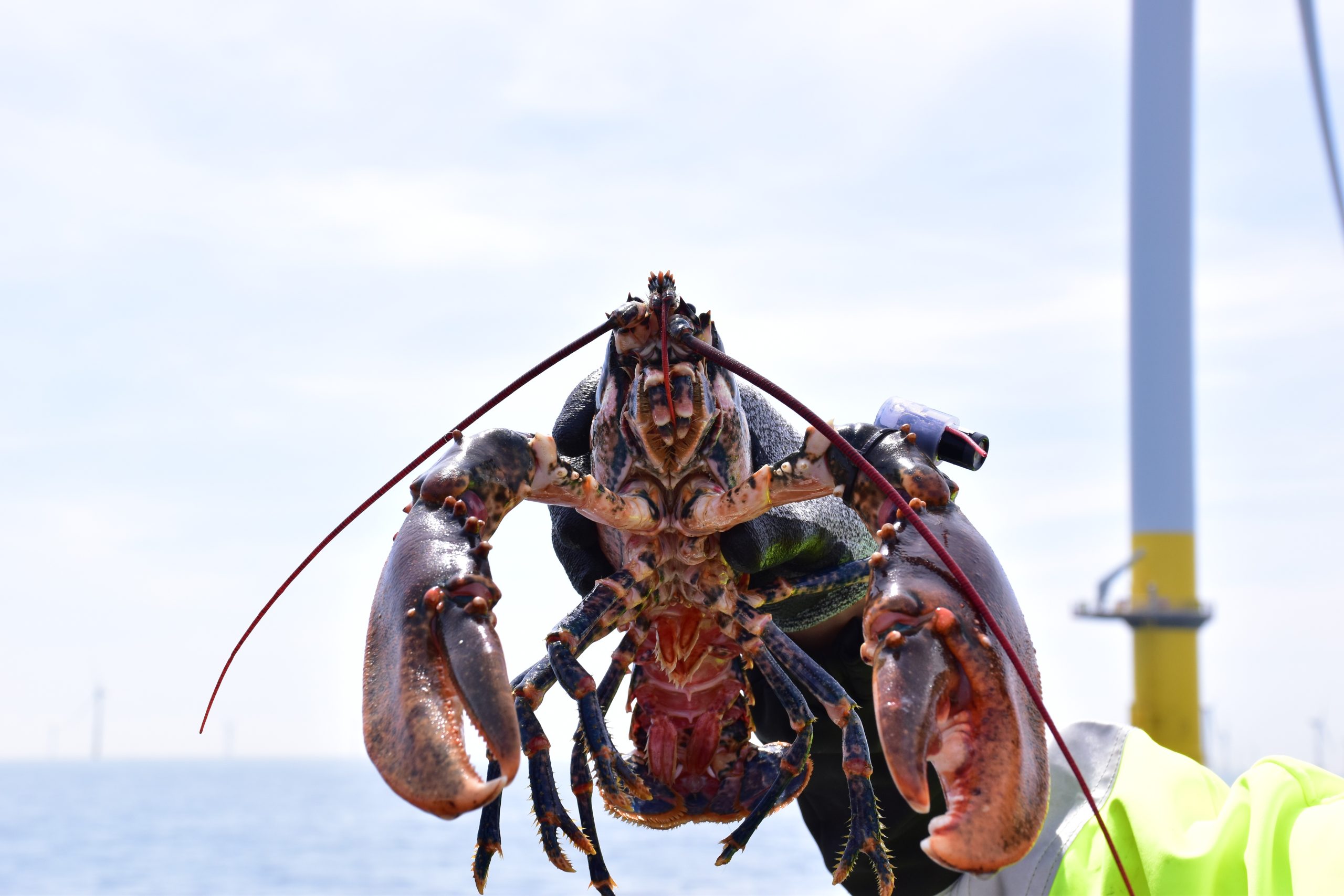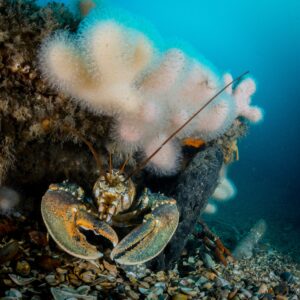This project was launched with our partners, Ørsted and Wageningen Marine Research (WMR), who initially focused on cod. Ørsted provided their wind farm site, while Wageningen Marine Research led the research. Later on, we funded and initiated the lobster project, assisting with planning and fieldwork while WMR conducted the scientific research.

Ørsted
Studying cod and lobster activity
In offshore wind farms, nature has the potential to develop around wind turbine foundations. Since no fishing is allowed in wind farms, fish populations can thrive and grow. Lobsters also require specific conditions, and have a high standard of living. Could an artificial reef be a suitable home for this species? This project set out to find answers to how both Atlantic Cod and the European lobster fare in artificial reefs.

The Collaboration
The research
Concrete foundations of various sizes were placed at four locations in the Borssele I & II wind farm to shelter Atlantic cod and other large fish. At two sites, shells and stones were added. Wageningen Marine Research studied cod behavior, while our team at The Rich North Sea conducted field work, tracking tagged lobsters to understand their movements and the wind farm ecosystem.
Concrete foundations of various sizes were placed at four locations in the Borssele I & II wind farm to shelter Atlantic cod and other large fish. At two sites, shells and stones were added. Wageningen Marine Research studied cod behavior, while our team at The Rich North Sea conducted field work, tracking tagged lobsters to understand their movements and the wind farm ecosystem.
The project used pipe reefs and granite rock scour protection, with acoustic telemetry tracking cod and lobster movements around the monopile and artificial reefs. A grid of 16 acoustic receivers, mounted on 1.5 m tripods, enabled fine-scale positioning. Despite some losses, tracking provided key insights. Cod (64 total) and lobsters (24 total) were tagged and released in 2021 and 2022. Environmental data from a weather station buoy (17.7 km away) supplemented the study.
About the location
Located in the Dutch North Sea, Borssele Wind Farm 1 & 2 is the largest offshore wind farm in the Netherlands, powering one million homes.
Results
Cod activity patterns were detected by the acoustic telemetry, with 64 tagged cod monitored across two years. Although some receivers were lost in the process, fine-scale tracking provided valuable insights.
For lobsters, Hidden Markov Models showed that resident lobsters used artificial reefs for extended periods, with home ranges (102–254 m²) much smaller than in previous studies. However, all lobsters left the area after 51 days. This could be due to strong homing instincts, lack of food on young reefs, or insufficient hiding spots. Adult lobsters may not be ideal for translocation, and locally caught individuals may be better suited for artificial reef studies.

